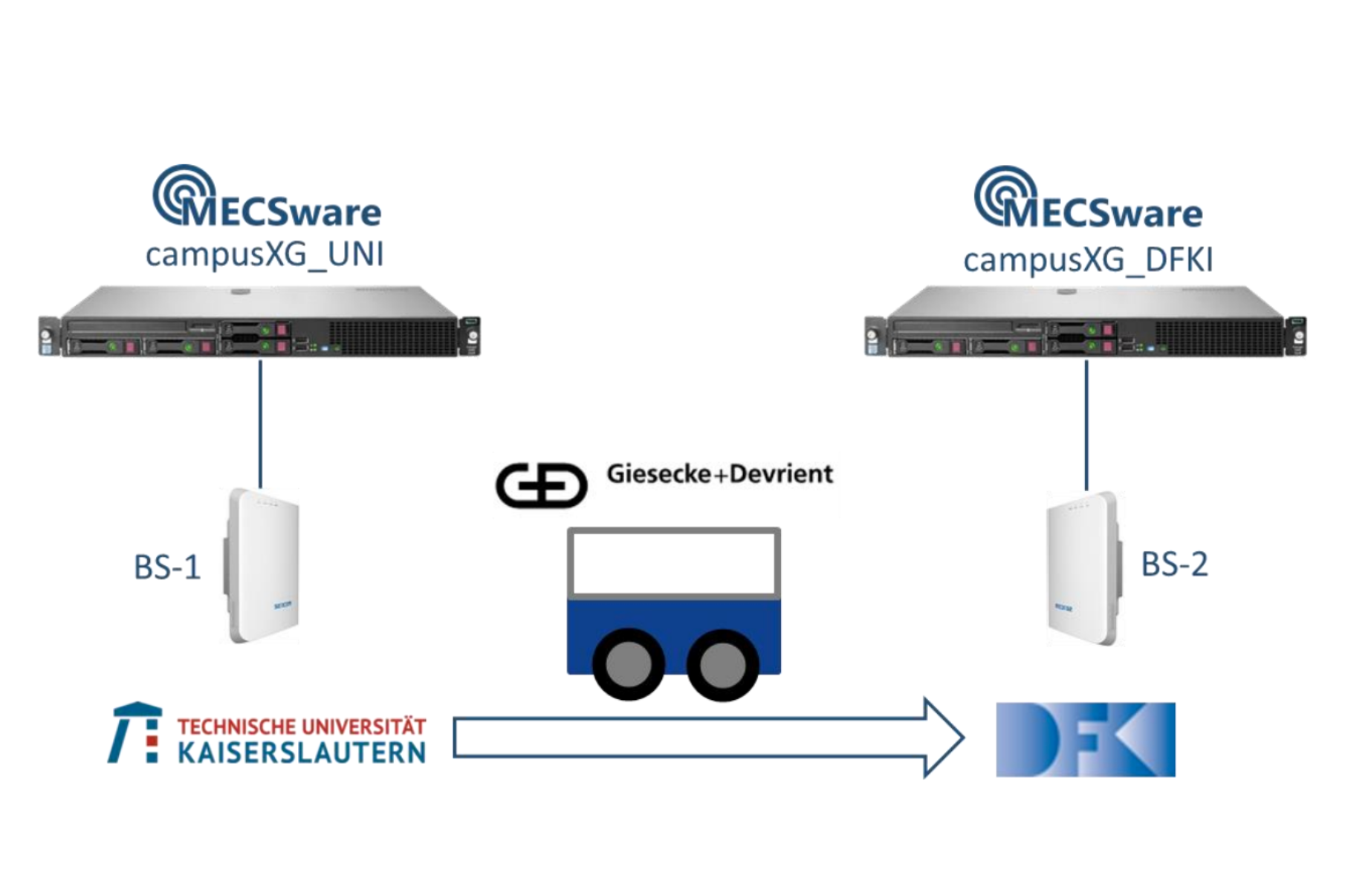Sponsors Article
Roaming for Private Networks
sponsors-article
Campus networks are geographically limited according to the frequency allocation granted by the Federal Network Agency (BNetzA) upon application. but what happens when a network subscriber enters or leaves this area?
When leaving the campus network, there is often a need for uninterrupted connection of an end device to a service or application. To do this, the end device, such as a vehicle, would first need to connect to a public mobile network. This process is referred to as “roaming out.” Subsequently, it may also be necessary for the end device to connect to another campus network. This process, in terms of the campus network, is referred to as “roaming-in”.
Network identifiers are administered globally by the ITU-T and nationally by the BNetzA. For campus networks, the ITU-T has reserved the Mobile Country Code (MCC) 999. The BNetzA has adopted this concept. However, networks with this MCC are not roaming-capable. 3GPP protocol-based roaming in the classic sense of logging on to the visited network with the access data of the home network is therefore not possible. However, if the end device has access data to both networks, this problem can be solved.
Physical or virtual authentication
SIM card-based authentication is the method established over several generations of mobile communications for secure logon to a mobile network. The physical SIM card has been supplemented or replaced by a virtual eSIM (embedded SIM) – a chip implemented in the end device that contains the access data. In the industrial environment, the access data (subscriber profile) is configured remotely using secure protocols (IoT eSIM). Particularly in the case of a large number of end devices, significant cost savings can be achieved by using eSIMs compared with physical SIM cards. Another advantage is that access data for several mobile networks can be stored on an eSIM and selected under software control (Dynamic Network Selection). This feature is used to solve the roaming problem.
In cooperation with the Technical University of Kaiserslautern and Giesecke+Devrient Mobile Security GmbH, eSIM-based roaming between two campus networks was demonstrated in an industrial application for the first time worldwide: An industrial robot developed by the TU Kaiserslautern is initially logged into the MECSware campusXG network of the TU Kaiserslautern, to which the base station BS-1 belongs. On the route to the BS-2 base station, which belongs to the campusXG network of the German Research Institute for Artificial Intelligence (DFKI), an industrial PC installed on the robot continuously measures the reception field strength. As soon as this falls below a configurable value, the PC gives the command to switch to the DFKI network.
The switchover is implemented by the Local Profile Assistant (LPA) provided by Giesecke+Devrient, a software installed on the PC to manage the eSIM Subscriber Profiles. The interruption of the network connection is shorter than one second. This change, controlled solely by the PC, is neither a handover between two base stations of a network nor roaming between two networks in the classic sense. eSIM-based Subscriber Profiles can be flexibly reloaded so that versatile roaming scenarios can be easily mapped.
(Parts of this text were translated with www.deepl.com)


